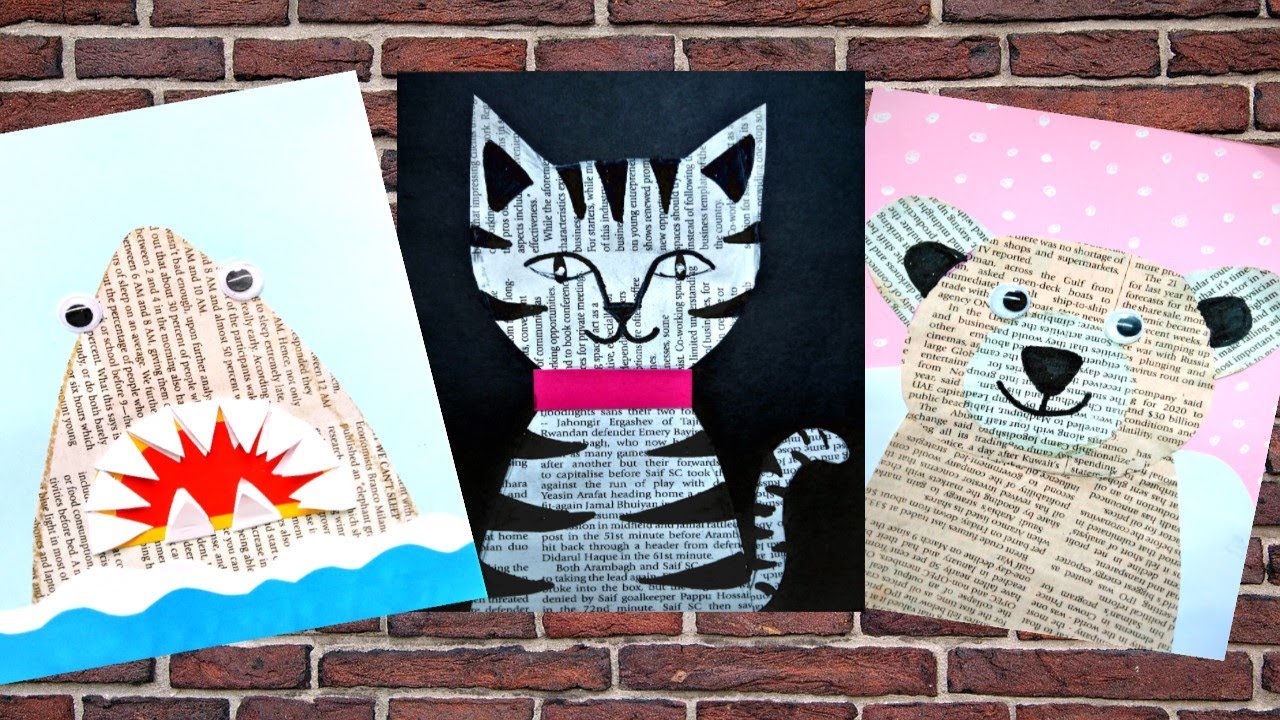5 Kids Collage Projects
Collages can be simple pieces of art made from a few pictures glued on paper or they can be sophisticated works incorporating fabric, paper, and other materials.
Collages can be stand-on-their-own pieces of art or can be turned into picture frames, magnets, scrapbook pages, journal covers, etc. Photograph a collage and use the image on an invitation or turn it into an iron-on transfer for a t-shirt or tote bag.
Tissue Paper Collage Sun Catcher
Because tissue paper is thin, when the pieces are overlapped, they create new colors. Tearing the pieces by hand produces an entirely different effect than cutting the paper – try making a couple of collages using both methods. Do a collage on a piece of plastic, like a sheet protector or report cover, and then cut out an interesting shape when the glue is completely dry to turn the collage into a suncatcher.
Nature Collage for Kids
A collage isn’t limited to paper. Try gathering interesting objects while on a nature walk and then return home to glue them in an appealing arrangement on a piece of poster board. An adult may need to use a hot glue gun to anchor heavier objects like sticks and acorns into place. Also consider creating a collage that turns the objects into another object, such as positioning the leaves so they resemble a bird or a deer.
Animal Collage
Use the outline from a stencil or a simple coloring page image to create a silhouette of an animal. Cut out this shape. Look for magazine pictures of that animal or of the place the animal lives (or even objects that are the color of the animal). Cut out and glue the pictures onto the animal shape.
It is okay if the paper goes over the edge of the shape; trim those pieces later when the glue dries. Completely cover the shape. Glue the animal shape collage onto a background piece of cardstock or poster board.
Cotton Craft for Kids
Add dimension to a black and white picture with the addition of cotton swabs. Start this project by drawing a picture of something black-and-white, such as a zebra, penguin, sheep, Dalmatian, bare-branched tree covered in snow, etc. Draw the picture on a piece of cardstock or poster board – the regular paper is too flimsy to support the weight of the cotton swabs. For younger children, print out a coloring page and glue it to a piece of lightweight cardboard.
Cut the tips off cotton swabs. Glue the cotton swabs, so they are touching, over the parts of the picture that are white to add texture and a third-dimension to the artwork.
Random Collage
Tear pieces of scrapbook paper, construction paper, or gift wrap paper into small pieces. Set a background sheet of paper on the floor. Stand up and drop the small pieces of paper one at a time toward the sheet of paper. Not all the paper will fall on the background; pick up those small pieces and try again to drop it on the larger piece of paper. For even more randomness, try creating a Behind Your Back Collage.
Without shifting the small pieces of paper from where they fell on the larger sheet that’s set on the floor, glue them in place. Add a dab of glue to hold the pieces and then move the collage to a more convenient table to add more glue that will help the torn paper to stay in place.
Collage making can be an interesting art form. Combine with yarn, painting, and other materials for a mixed media piece. For kids who are uncomfortable drawing, collage allows them to use ready-made materials while still learning about composition in art.
